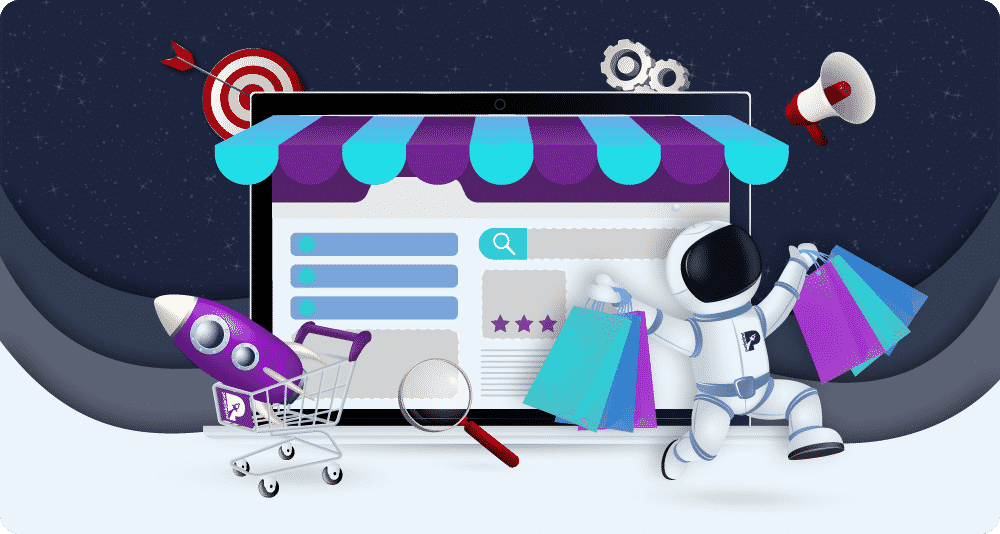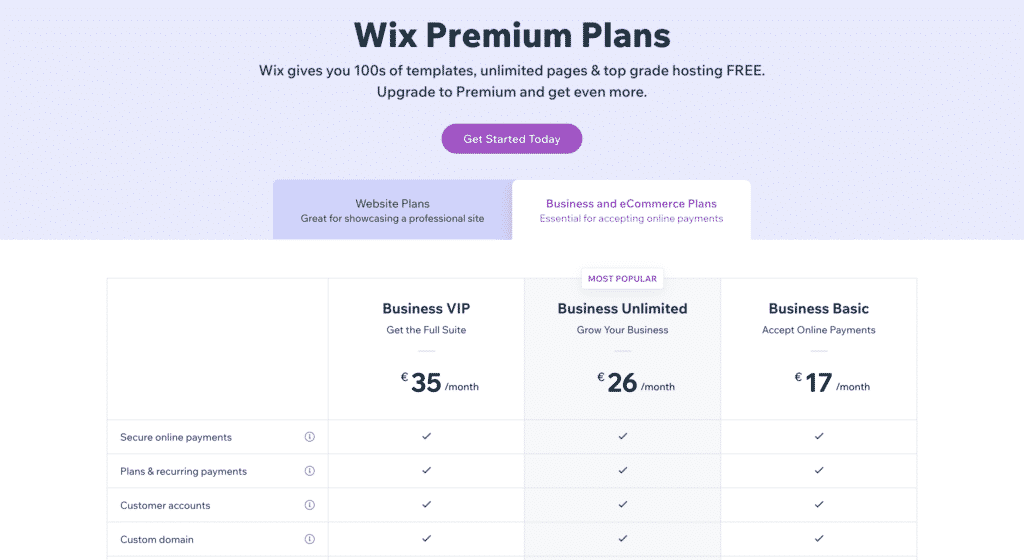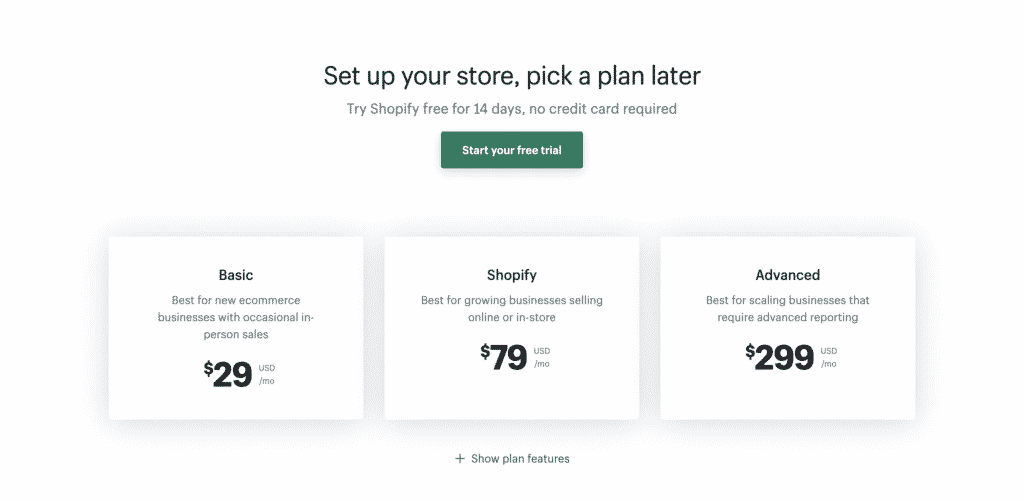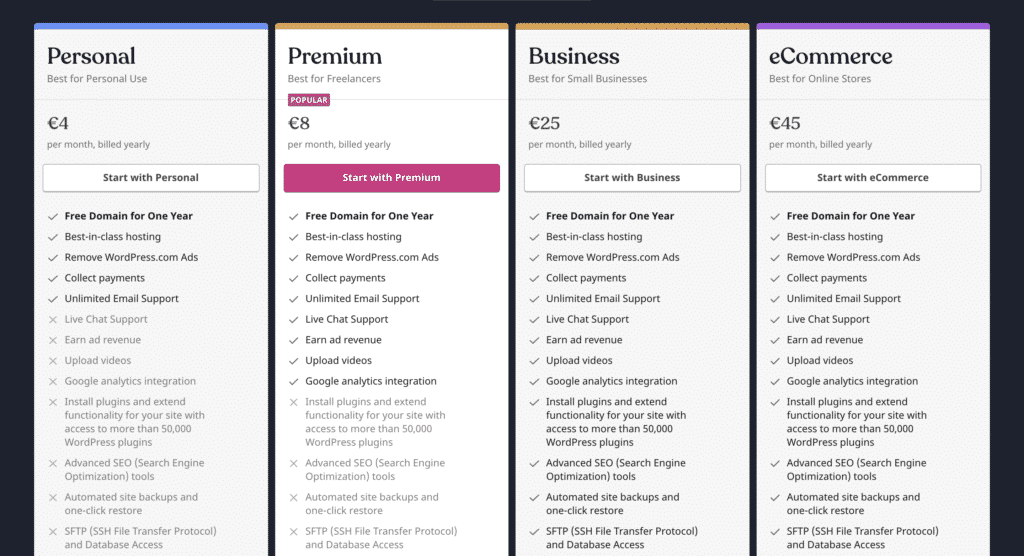
The Ultimate Guide for Setting Up an Online Store
Key Takeaways
- To build an online store, you’ll need a domain name, a website builder for e-commerce sites, and a team of excellent web developers and designers.
- Your key focus points should be ease of use, mobile and desktop optimisation, navigation, CTAs, and trustworthy brand image.
- After the above, get out there and list your products! Don’t forget to optimise your product descriptions for SEO so that you can obtain that valuable organic traffic.
Whether you already run an existing business, you’re sick of relying on sales from your local physical store, or you want to start a new dropshipping business online, having an online e‑commerce store is crucial.
Having an e‑commerce store can save you costs on rental and staff bills, and the potential of fast international deliveries allows you to reach customers from all around the globe.
Statistics show that in 2020, 16% of all global sales were made through online stores. Trends show that these numbers are constantly rising and that more and more people prefer to buy online.
The heart of any successful e‑commerce business is its online store.
Think of your e‑commerce website as the storefront of your business. Your website is the best place to experiment with different products and receive customer feedback quickly. You can upload new products or run sales in a matter of minutes.
Luckily, building an online store is now easier and quicker than it was a couple of years ago. Website builders such as WordPress, Wix, and Shopify offer affordable, customisable e‑commerce solutions.
Are you ready to dive into the journey of building your online store?
If you want to get the most out of your new e‑commerce business, you need to learn how to do everything the right way — from buying a domain name to choosing a website builder. There are also the tasks of designing and developing a store and creating a marketing and SEO strategy for growth and development.
Below are the different challenges you need to overcome to set up a successful e‑commerce store.
Step 1. Buy a domain name
Since you are reading this guide, we’ll assume that you have already explored your niche and competitors and that you’ve come up with a business plan.
It is time to choose a domain name for your brand new website. A domain name is the part of the website URL that highlights your store name.
For example, for the URL etsy.com, the domain name is Etsy, which is also the company name.
When choosing your domain name, make sure to avoid well-known titles that already exist or ones similar to big existing brands. Avoid long and complicated names. Keep it as simple as possible to allow your customers to remember you easily.
It’s tempting to choose a name that is already out there, but this can only hurt your business. You want to make your online store stand out, not make it merge with other brands.
If you don’t have any ideas for naming your website, hosting platforms like Godaddy, Bigcommerce or Hostagotor can help you make this choice. Enter 1 or 2 keywords that match your niche and browse the results until you find a suitable domain name.
Once you have your domain name, you need to choose your website suffix such as .com, .net, .biz, .org, etc.
The .com and .org extensions are considered top-level domains. A .com domain name is the most popular domain option out there, and it’s the best option for e‑commerce websites.
Some research shows that Google’s preferred domain extension is .com because most people browsing online assume that a business website consists of the business’s name and .com at the end.
Step 2. Choose an e‑commerce builder
To start selling products online, you will need a website that attracts customers and encourages purchases. A well-optimised and secure payment process and a good site structure are essential for website performance.
When building an online store, one of the most important steps is choosing the right website builder.
There are a bunch of e‑commerce store builders on the market that help you create and customise your online store without you needing any advanced coding skills.
Here are some of these platforms:
Wix Website Builder
Wix’s website builder has plenty of unique, fully customisable e‑commerce themes to choose from. When you sign up for their services, you get flexible design capabilities and professional analytical tools to manage and analyse your website’s performance.
The website builder also offers affordable subscription plans.
Wix is the perfect starting point for small businesses or new dropshipping businesses. Even if your business is relatively small, you don’t have to start with the most expensive plan.
With all premium plans, you can connect your domain, remove ads from the website and list an unlimited amount of products.
Learn more about the complete list of features on Wix’s website here.
Shopify Website Builder
Shopify is one of the most popular platforms for building e‑commerce websites on the market. The builder is packed with customisable templates with intuitive setup settings that make them easy to work with.
Shopify gives you full access to HTML and CSS for full website customisation, which is excellent if you have coding experience.
Shopify offers great marketing, analytics, and social media integrations that help you achieve your marketing goals.
Shopify offers more expensive pricing options than similar website builders on the market, but the services and support it offers in return are of a high-quality and focused entirely on scaling and developing online stores.
If you intend to create a vast e‑commerce website that sells hundreds of products to different customers from all over the world, Shopify is the perfect choice for you. Furthermore, Shopify is usually the best choice for businesses that already have a regular monthly turnover.
WordPress Website Builder
WordPress is one of the largest platforms for creating different types of websites. The platform offers various templates that you can customise.
WordPress subscription plans offer all the tools you need to build, set up and manage your online store. Its premium plans provide great security and SEO tools.
If you have a small business and you intend to start your online store with a few dozen products, WordPress is the perfect choice for you.
Step 3. Choose the right subscription plan
Whatever type of website builder you choose, the next important step is to pick a subscription plan that fits your company’s needs. The bigger the site you want to build and the more functions you want to customise, the bigger the subscription plan you’ll need to buy.
Determine how many products you plan to sell. If you intend to start with a small number of products, buying a simpler plan with fewer functions is best.
If you want to sell lots of products online, it is best to buy professionally with as many functionalities as possible. The more transactions you make on the site, the more money you can save on the transaction fees.
One thing to keep in mind when choosing your e‑commerce website package is that the cheaper one can often cost you more in the end.
We admit that it is tempting to focus on the most affordable option on the market, but the truth is that the more you pay, the more you get.
For example, more extensive packages can give you access to multi-channel integration and allow you to sell on channels other than your website, such as Instagram or Facebook. More expensive plans often provide access to analytics data that will help you improve the conversion rate on your site.
More sales options often mean more opportunities to win new clients for your business.
Step 4. Website design or e‑commerce theme?
Got your domain name and subscription plan picked? It’s time to choose your website’s look.
All website builders on the market offer a large selection of free and paid templates that you can choose for your store. If you decide to use a ready-made theme for your website, you can develop it quickly without being a design or coding expert.
These platforms often offer intuitive drag and drop features for customisation. Once you select a template of your choosing, you can go to your admin panel and start customising: upload your logo, change the text size and font style, change the colours and the positions of the various sections. Make it your own.
We understand that choosing an already built template is cheaper and often more straightforward than hiring a design agency to help you create your site. So, decide which path is best for your business’s current needs.
With e‑commerce templates, there’s almost no room for creativity — you’re limited to what the theme allows you to personalise. Many website templates on the market follow the same formula; most follow the same patterns and share a similar look with few differences.
This poses the risk of making your store unnoticeable, as it will look the same as other stores on the market. Even worse, you run the risk of another business having precisely the same website as yours.
If you decide to work with a ready-made theme, remember that “complete” customisation is not always complete. Before choosing a specific theme, make sure that it fully meets your needs and you have access to the necessary functions. Each website theme is different, and some come with more functionalities than others. Do your homework before buying a particular template.
Step 5. Focus on your conversion rate
The goal of any online store is to make as many sales as possible, or in other words, to have a good conversion rate. To achieve this, your website should look good, feel trustworthy to your customers, and be really easy to use.
Here are some things you can focus on that can help you build a good conversion rate right from the start:
Build good navigation
Navigation is important for any website on the Internet, but if you have a large e‑commerce website, good navigation is absolutely crucial.
The smooth process of navigating your e‑commerce website is an absolute must to win online sales. Most website visitors will leave your site in seconds if they can’t find what they’re looking for or can’t figure out how to get somewhere.
Make sure your website navigation is easy to understand and accessible for all types of devices, from desktop to mobile.
Mobile-first experience
Make sure your online store is just as easy to use on small mobile screens as it is on large ones. Nowadays, most of us surf and shop online from our mobile devices, making it increasingly necessary to provide seamless mobile shopping for customers. Failure to do so can seriously damage your conversion rate.
Help your customer make decisions
In today’s fast-paced world, decision-making is becoming increasingly difficult for many consumers. After all, in a matter of a few seconds, we all have the opportunity to buy something we want from the other side of the world.
Reduce the choice paralysis for customers by removing all the distractions on the way. Organise your products into relevant and specific categories so that customers can pick which products they want to see. Try offering personalised recommendations for your visitors, so they don’t have to go through the decision-making phase.
Pay attention to your photography
Many consumers in online stores pay more attention to photos. That is why the images used to advertise your products must be of a high quality, grab customer attention, and present the products in the best possible light.
Step 6. List your products
The home page might be the storefront of your website, but your product page is what will convince your visitors to actually buy a product.
Start adding the items you want to sell on your website, and make sure to include all the information that can help your customers make the buying decision.
In addition to quality photos, make sure that your product descriptions stand out and are not unnecessarily long. They should be easy to read and scan. Get creative and show off what makes your brand and products different from others
Avoid using clichés or technical language that can confuse your audience. Use strong words and make sure you meet the needs and problems of your customers. Don’t talk about yourself and your company; talk about how your products can solve problems.
Remember to optimise your product descriptions for SEO as well. Use keywords and phrases that can help you rank well on Google and capture the attention of your target audience.
Be sure to add the price of the products as well as the delivery costs and terms.
Add another section with positive customer reviews to encourage users to make a purchase. Lastly, add the category which the product belongs to and a section with similar items to improve user experience.
Once you’ve set up your online store and made sure your website is secure, it’s time to publish it.



